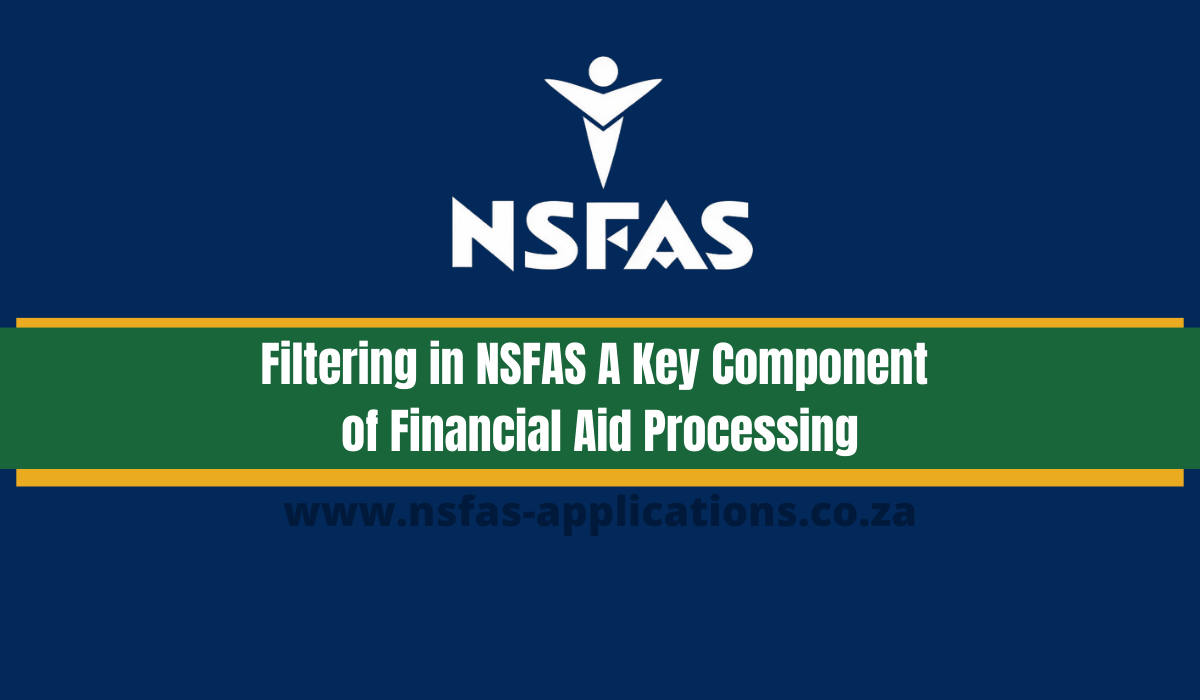Filtering in NSFAS: A Key Component of Financial Aid Processing. The National Student Financial Aid Scheme (NSFAS) is a government-run program in South Africa that offers financial assistance to eligible students. This program aims to provide higher education opportunities for students from disadvantaged backgrounds.
What Does Filtering Mean in NSFAS?
Filtering is a critical aspect of the NSFAS application process, serving to enhance efficiency and accuracy. Let’s delve deeper into what filtering means in the context of NSFAS.
Background on NSFAS
Established in 1991, NSFAS’s primary mission is to support students who lack the financial means to fund their education. Over the years, the program has evolved to better cater to students’ needs, covering tuition fees, accommodation, and living expenses. Eligibility for NSFAS is based on South African citizenship, a combined household income below R350,000, and enrollment in public universities or colleges.
Understanding NSFAS Filtering
Logging into myNSFAS to Check Application Status
After submitting your NSFAS application, you can regularly monitor its status by logging into myNSFAS. When you check your application, you might come across the term ‘Filtering.’ But what exactly does this mean?
Types of Filtering in NSFAS
1. Pre-Filtering in NSFAS
Pre-filtering is the initial screening of applications before they are fully processed. This step ensures that applications meet eligibility criteria and are complete. By pre-filtering, NSFAS saves time and resources by reducing the number of incomplete or incorrect applications that need processing. During pre-filtering, applicant details are verified, and any errors or incomplete sections are flagged for correction.
2. Post-Filtering in NSFAS
Post-filtering occurs after the application has been processed. Its purpose is to verify that the student has received the correct funding. During this stage, any errors that might have occurred during processing are identified. To perform post-filtering, the student’s academic record is compared with the application data. In cases of discrepancies, a human operator reviews the application to ensure accuracy before funds are disbursed.
Benefits of Filtering in NSFAS
The filtering process in NSFAS offers several advantages:
- Data Accuracy: Filtering ensures that the application data is accurate and complete, reducing the likelihood of errors in funding allocations.
- Faster Processing: By eliminating incomplete or incorrect applications through filtering, NSFAS can expedite the processing time, ensuring eligible students receive funding promptly.
- Error Minimization: The filtering process identifies and rectifies errors before disbursing funds, minimizing the risk of incorrect allocations.
Conclusion
Filtering is an essential component of NSFAS applications. It not only facilitates the swift and accurate processing of applications but also ensures that only eligible students receive financial aid. NSFAS employs two types of filtering: pre-filtering and post-filtering, both of which play pivotal roles in guaranteeing the program’s continued support to students in need.
